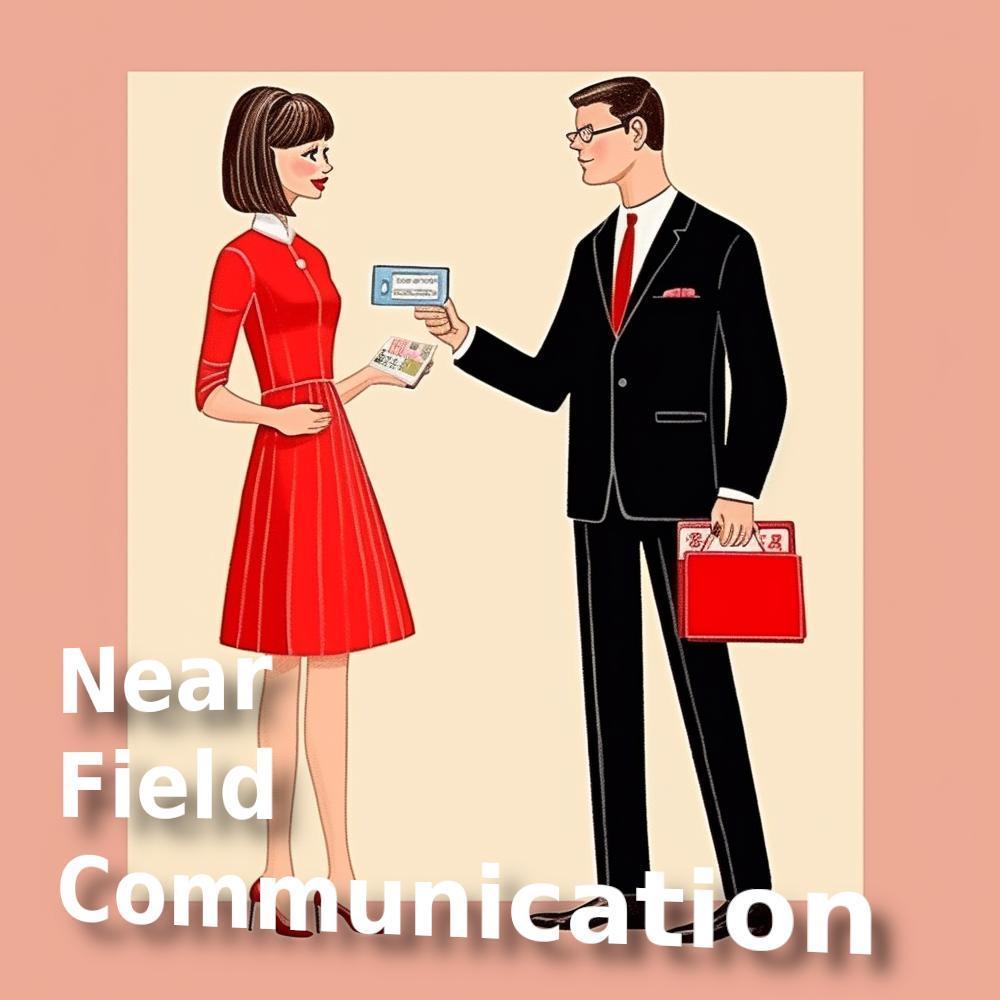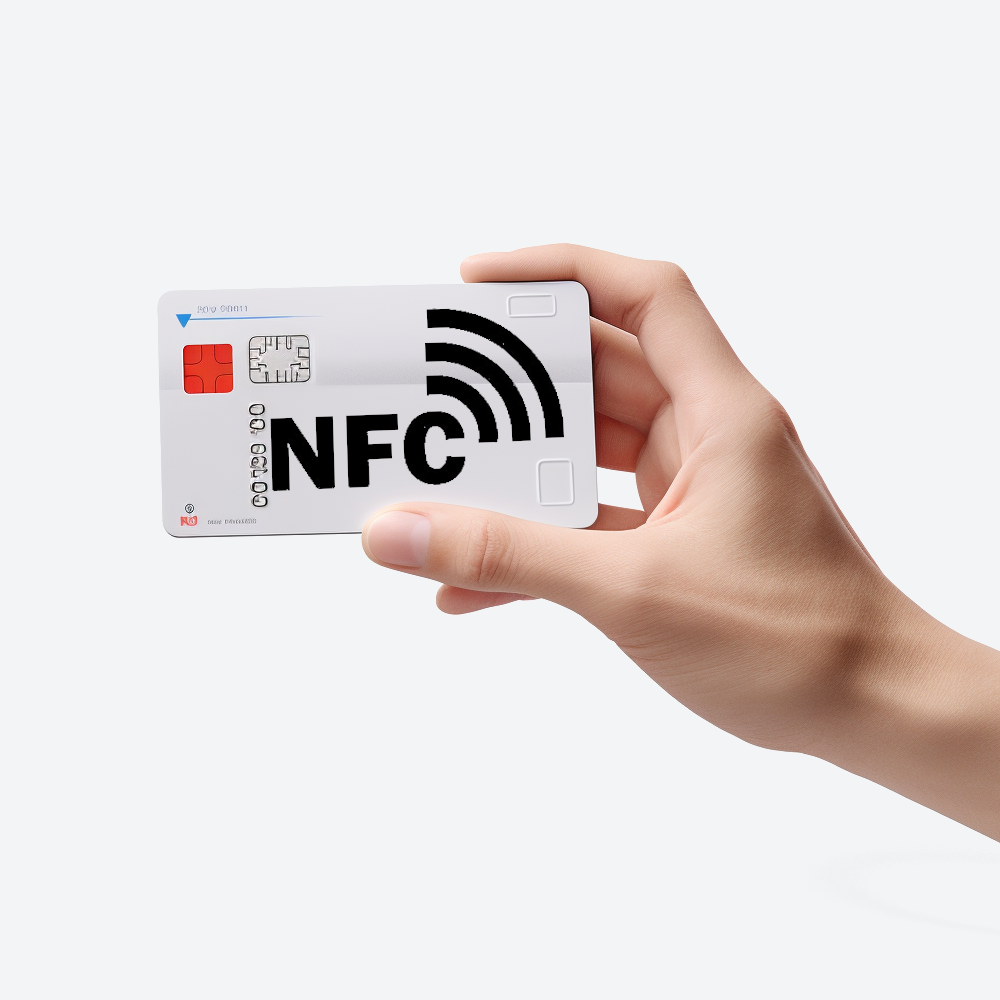


NFC stands for "Near Field Communication." It's a wireless communication technology that allows devices to exchange data when they are in close proximity to each other, typically within a few centimeters. NFC technology operates on the principles of radio-frequency identification (RFID) and is designed for short-range, secure communication between devices.
Here are the key details about NFC:
1. How NFC Works:
NFC operates using electromagnetic induction. It involves two components: the initiator (active device) and the target (passive device).
The initiator, often a smartphone or another electronic device, generates a radio frequency (RF) field that powers the target device.
The target device, which can be a passive NFC tag or another NFC-enabled device, uses this RF energy to transmit data back to the initiator.
2. Modes of NFC:
NFC operates in three modes: reader/writer mode, card emulation mode, and peer-to-peer mode.
Reader/Writer Mode: In this mode, an NFC-enabled device (initiator) reads data from or writes data to an NFC tag (target). It's commonly used for applications like contactless payments, access control, and reading information from posters or labels.
Card Emulation Mode: In this mode, an NFC-enabled device can act as a contactless smart card or NFC tag. It allows smartphones to emulate contactless cards, making them compatible with existing contactless card infrastructure for mobile payments and access control.
Peer-to-Peer Mode: In this mode, two NFC-enabled devices can exchange data directly between each other. This is used for applications like file sharing, device pairing (e.g., Bluetooth), and multiplayer gaming.
3. Common Applications:
Mobile Payments: NFC technology is widely used for mobile payment services like Apple Pay, Google Pay, and Samsung Pay. Users can make payments by tapping their smartphones on NFC-equipped payment terminals.
Access Control: NFC is used for access control systems in buildings, hotels, and transportation. Users can tap NFC cards or smartphones to gain entry.
Public Transport: Many public transportation systems use NFC cards or smartphones to allow passengers to pay for rides or access transit services.
Smart Posters and Marketing: NFC tags on posters, billboards, and products can provide users with additional information, promotions, or links when they tap their NFC-enabled devices.
Device Pairing: NFC is used for quickly and securely pairing Bluetooth devices, such as headphones or speakers, with smartphones.
4. Security:
NFC transactions are generally considered secure because of their short-range nature. The close proximity required for communication makes it difficult for unauthorized parties to intercept data.
Data transmission can be encrypted, and devices often employ secure elements or tokens to protect sensitive information.
5. Compatibility:
NFC technology is now common in many smartphones, tablets, and other devices. However, for NFC interactions to occur, both the initiator and target devices must support NFC.
In summary, NFC (Near Field Communication) is a wireless communication technology that enables short-range data exchange between devices. Its applications range from mobile payments and access control to device pairing and marketing. NFC is valued for its ease of use and security in close proximity interactions.
NFC business cards and NFC sticker tags are innovative applications of NFC technology that have gained popularity in various industries. They leverage the convenience of NFC for sharing information, contacts, and digital content seamlessly. Here's more information about each:
NFC Business Cards:
NFC business cards are a modern take on traditional paper business cards. They incorporate an embedded NFC chip that allows users to easily exchange contact information and other digital content with a simple tap of their NFC-enabled smartphones. Here are some key details:
How They Work:
NFC business cards typically contain a small NFC chip and antenna embedded within the card.
Users can program their contact information, website links, social media profiles, or other digital content onto the NFC chip using a compatible NFC smartphone app.
To exchange information, one person taps their NFC business card into the recipient's NFC-enabled smartphone. This action triggers the transfer of the programmed data.
Advantages:
Environmentally Friendly: NFC business cards reduce the need for traditional paper business cards, making them more eco-friendly.
Interactive: They can be programmed to link to websites, portfolios, videos, or any digital content, making them interactive and engaging.
Easy to Update: If your contact information changes, you can easily update the information on the NFC chip without the need to print new cards.
Use Cases:
Networking Events: NFC business cards are great for professionals attending conferences, trade shows, or networking events where they want to share their information quickly.
Sales and Marketing: Marketers can use NFC business cards to distribute promotional content and engage potential customers.
Security: NFC business cards are secure, as data transfer requires close proximity. Additionally, users can choose what information they share.
NFC Sticker Tags:
NFC sticker tags are adhesive tags or labels that contain an NFC chip. They are used for a variety of purposes, from automating tasks to providing quick access to digital content. Here's more information about NFC sticker tags:
Applications:
Home Automation: NFC sticker tags can be placed around the home to trigger actions like turning on lights, adjusting thermostat settings, or playing music when an NFC-enabled device is tapped against them.
Marketing and Promotions: Retailers use NFC sticker tags to provide product information, discounts, or loyalty program sign-ups to customers.
Access Control: NFC sticker tags are used for secure access control, such as granting entry to restricted areas or checking in at events.
Asset Tracking: They can be used to track and manage assets, such as equipment in a warehouse.
Customization:
NFC sticker tags can be customized with specific actions or content based on the user's needs.
For example, a sticker on a restaurant table might link to the menu, while one in a museum could provide detailed information about an exhibit.
Compatibility: NFC sticker tags are compatible with a wide range of NFC-enabled devices, including smartphones, tablets, and certain wearables.
Ease of Use: They are user-friendly, requiring only a simple tap or close proximity to activate actions or access content.
Security: Like other NFC applications, sticker tags are secure due to the short-range nature of NFC communication.
Both NFC business cards and NFC sticker tags leverage the convenience and security of NFC technology to enhance interactions, streamline tasks, and provide valuable digital content to users. They are versatile tools with applications in various personal, professional, and commercial contexts.

We use cookies
We use cookies and other tracking technologies to improve your browsing experience on our website, to show you personalized content and targeted ads, to analyze our website traffic, and to understand where our visitors are coming from. Privacy Policy.